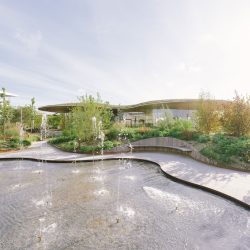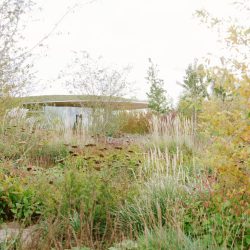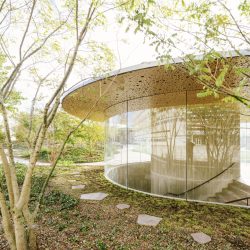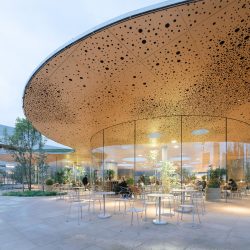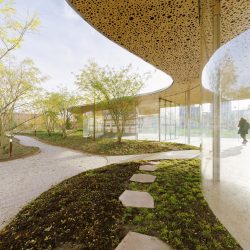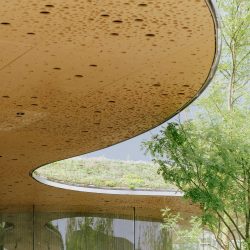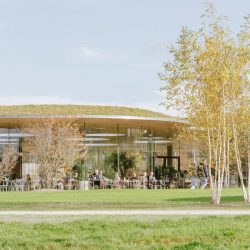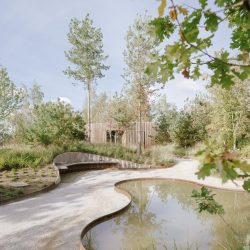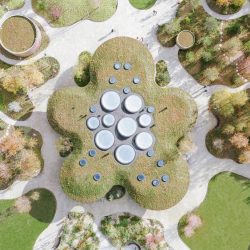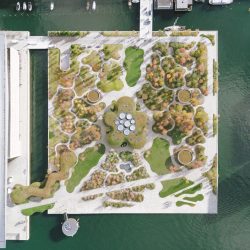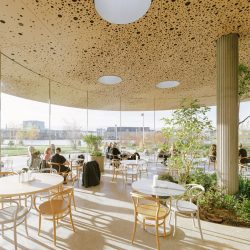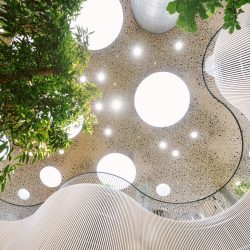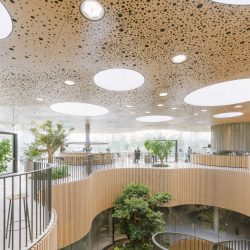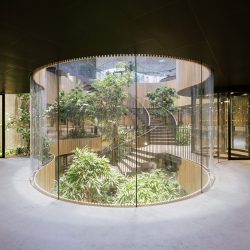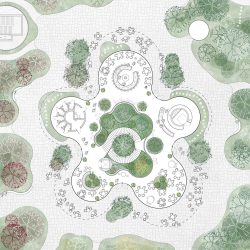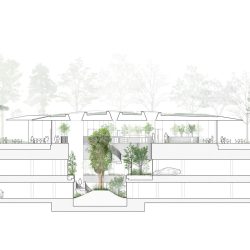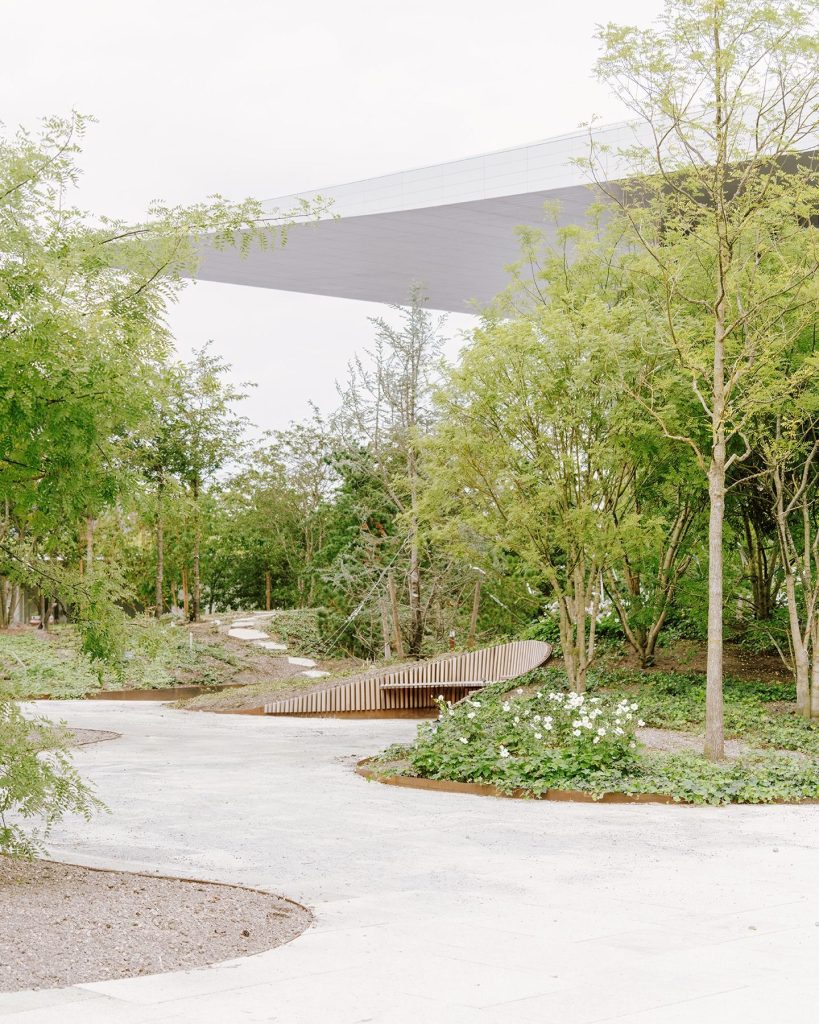
COBE . photos: © Francisco Tirado
Designed to be an inviting, all-year-round public attraction, the park features no less than 628 trees,80,000 herbaceous perennials and bushes, and 40,000 bulb plants, from all around the world. In total,223 unique exotic and local species provide a vibrant and ever-changing backdrop for visitors.
A year-round oasis, setting the stage for all kinds of life
The vegetation’s appearance, scent, color, and density vary with the seasons. Spring blooms in a rich color palette, summer brings various shades of green, autumn showcases red and yellow tones, and winter is dominated by evergreen pine trees and frozen ponds. The wide variety of plant species and diversity of sizes provide a rich environment for birds and insects to find food and shelter.
A greenhouse at the heart
In addition to the gardens, the park features a central greenhouse with a café, giving access to car parking underneath the park’s surface. The greenhouse is designed as an organically shaped glass structure with a hovering roof, intended to surprise and delight visitors as they navigate the lush landscape. The greenhouse and café will ensure that Opera Park remains a vibrant destination year-round, even during winter when many of Copenhagen’s parks are desolate. Inside, the greenhouse terrace down to the parking levels, which accommodate up to 300 cars, while its subtropic biotope also descends to vertically weave together the park with the underground levels.
A covered connection to the Opera
The park also features a covered connection to the adjacent Royal Danish Opera via a covered walkway atop a landscaped bridge, allowing a weather-protected link between the parking facility and the Opera. Echoing the architecture of the greenhouse, the walkway’s curved glass and floating roof evoke the landscape design in its meandering path. As one of three bridges to the island, the connection is designed as a piece of nature crossing the harbor canal, fully integrating landscape and architecture into one.
Benefitting from rain and sun
Rainwater is considered a valuable resource for the park, channeled from the roof of the Royal DanishOpera into underground water reservoirs used for greenhouse irrigation. Pathways are designed with a permeable gravel surface, and excess rainwater is collected in rain beds for infiltration and evaporation. The green roofs of the landscaped bridge and greenhouse capture and delay the release of rainwater to the site while also serving as a food source for the park’s fauna. Solar panels on the Opera’s roof provide power to the underground parking facility, the park, and the greenhouse. The park’s chosen materials are robust and fully recyclable, while the abundance of trees and plantings shield against strong winds coming from the harbor and the sea, reducing turbulence and increasing the level of comfort for park users. Furthermore, the elevated terrain safeguards the island from flooding during heavy rainfall and significant rises in the harbor water level.
_



